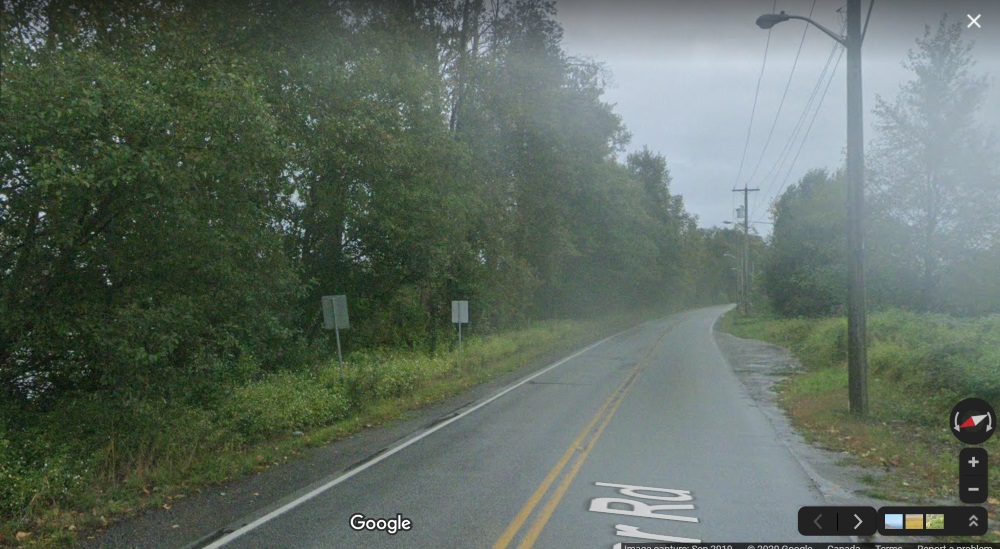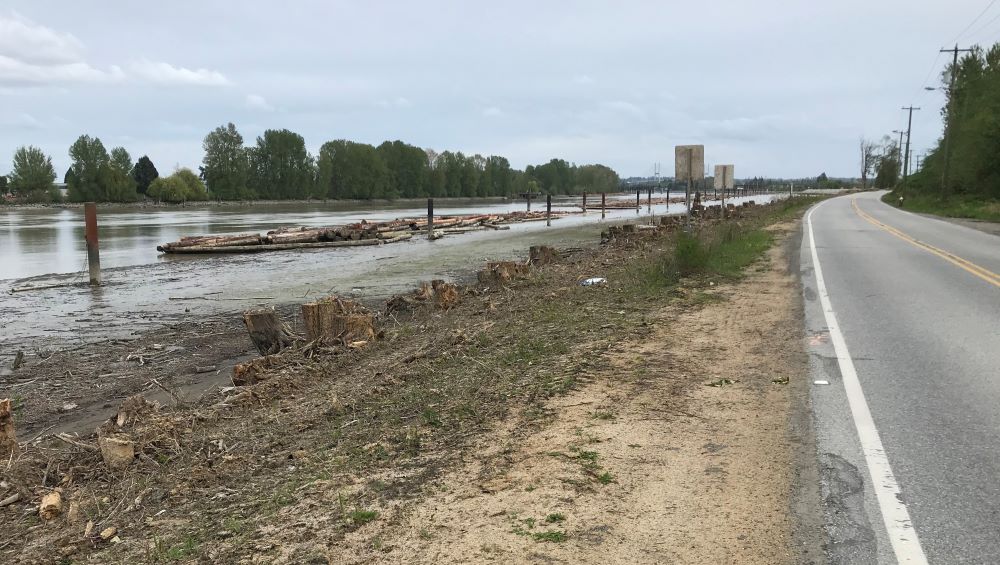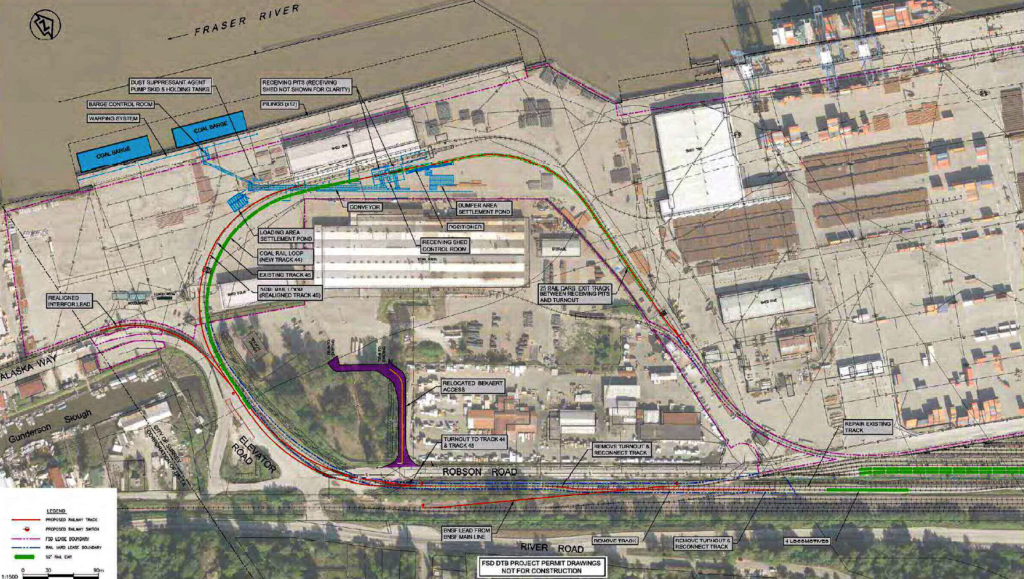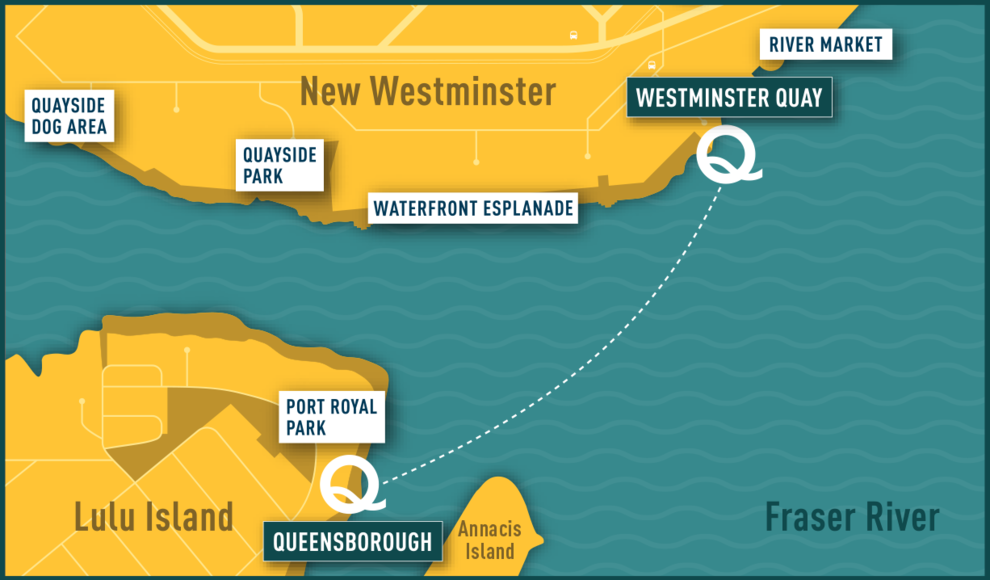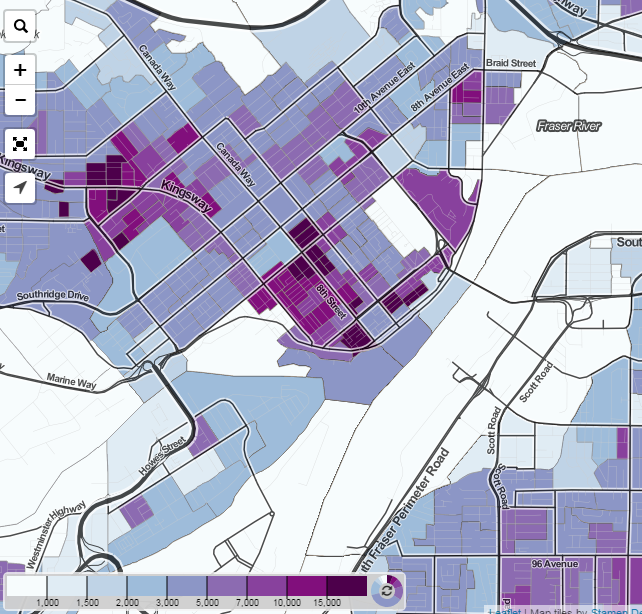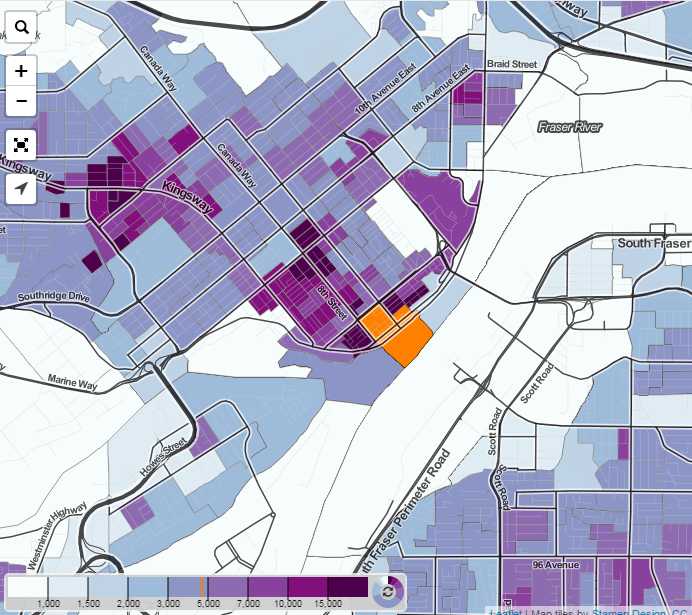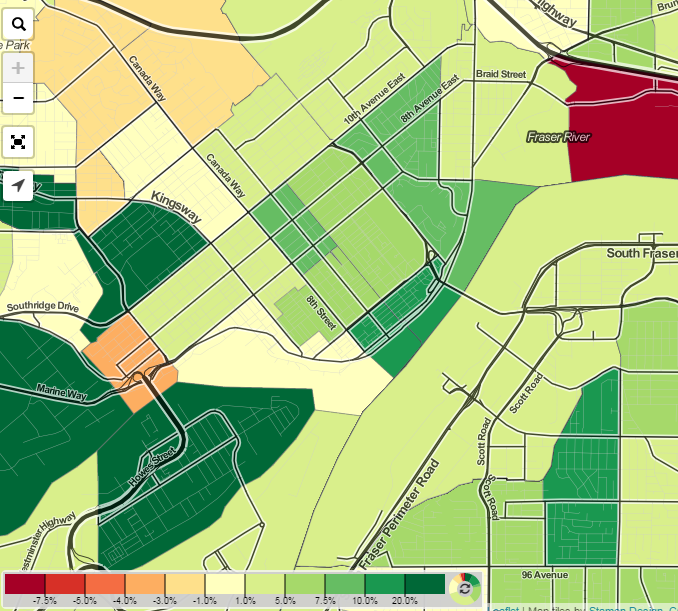John asked—
Hi, Pat. I have read everything on your blog over the years, and support all of your ideas for a more equitable/human distribution of public spaces. Now that the pandemic has shown how fragile the Q2Q link is, I must ask if the idea of a fixed pedestrian bridge has been re-opened. I know that there were legal concerns regarding use of the existing rail link as an affordable solution, but, is it just possible that there may be a change of heart in that direction?
It’s not really a change in heart, because it wasn’t heart that prevented the bridge from being built.
I agree that the COVID situation caused us reflect over what the QtoQ ferry is meant to be, and how we value its operation. This conversation was a frequent one during the use restrictions, and is an ongoing source of angst in the Queensborough community. Recently, I was part of a Queensborough Residents association meeting with MP Julian, MLA Singh and School Board Chair Dhaliwal where this discussion came up again, and I thought to myself “Self, you have that Ask Pat just sitting there, you ever going to write an answer?”
Sorry it took so long.
The story of the fixed pedestrian bridge has not changed much since I wrote this long explanation of the pitfalls of the project, and the same problems remain. There is still some unspent DAC funding (although the Casino being closed for two years may impact that), but nowhere near enough to build the project. The engineering challenge of building it high enough for the Port Authority to permit it, yet keeping it accessible (i.e. less than 5% grades) remain problematic. The use of a swing or bascule bridge significantly increases build and operational cost (including, most likely, full time staffing).
The issues with using the existing train bridge are not just legal. Naturally, the Houston-based owner of the railway is reluctant to take on the liability of having a large piece of pedestrian infrastructure they don’t own attached to their bridge, but that could be overcome with insurance and agreements. There is a question of how to attach a pedestrian sidewalk to a 105-year-old bridge, but I think engineers could come up with something that works. The real problem is that the existing train bridge, with only a few metres of clearance over the river, has a default setting of “open” for boats to pass through, and only “closed” when a train passes, which is on the order of once a day. This would not work for a pedestrian link, for obvious reasons. The Port will not permit the change of operation of the bridge to default “closed” (permitting pedestrian crossings) with limited “openings” when a boat passes, for a number of reasons, including the increased collision risk on the river.
A pedestrian bridge can’t work like the existing train bridge – it must be much higher above the river, unless the Port and Marine Carriers can be convinced to change their regulatory requirements. There is nothing in it for the federally-regulated Port or Marine Carriers to agree to this. Our problems are not their problems, and they have authority.
That said, this still needs to be our medium- or long-term vision. Increasingly, our communities (not just New West, but every community on the River and marine coast) is seeing the waterfront as a place for people, not just a place for industrial activity. And as I have lamented in the past, too much of this prime riverfront industrial land us being used for industrial activities that in no way connect to the river. So building a fixed crossing is going to take more than money and vision, it is going to take partnerships across the region to help pay for it, and to shift the mindset about the River as a transportation challenge.
So, in the meantime we have the QtoQ Ferry.
Which brought us to the conversation through COVID times about how far the City was willing to go to support this service. The early response was to suspend the service for two reasons. Much like the Library, we did not know if we could operate safely and within unclear provincial health restrictions. And much like the Canada Games Pool, we simply couldn’t justify spending money on running it with the very low number of people who were going to show up to use it, as other transportation modes (transit and cars) shut down suddenly. Eventually, the health restriction issues were worked out (with protocols and reduced capacity), but the ridership was slow to come back, which led to, what I think, was a really healthy discussion at Council.
The essence of the discussion was (to me, at least, I shouldn’t talk for all of Council) whether the QtoQ was a vital transportation link or a nice to have community amenity. In my mind, if it was the latter, then I was not interested in us funding it at a time when our finances were so uncertain and the priorities were piling up in COVID response. However, as I was convinced we needed to see it as the former, it only became a discussion of how much we can afford to fund. A few adjustments of schedule were made, as people’s commuting patterns were shifted by the pandemic, and the service that worked best before was probably not the service we needed after.
The QtoQ is never going to pay for itself in its current format. The small ($2) fee to ride it does recover some money, but much like the Canada Games Pool or the Queens Park Arena (or Public Transit, for a regional comparator), the QtoQ is a community benefit we have decided to invest in, and we spend some of your property taxes running it.
If you value it, the second best thing you can do is let Council know. The best thing you can do is take the Ferry as often as you can and put your $2 down to show this transportation link is valuable. Demonstrating to partners (TransLink, Metro Vancouver, Port of Vancouver, senior Governments) that a link here is valued by the residents and helps with regional active transport network is the best way to build on the service to make it more financially secure, and to demonstrate that the fixed link deserves to be built.
